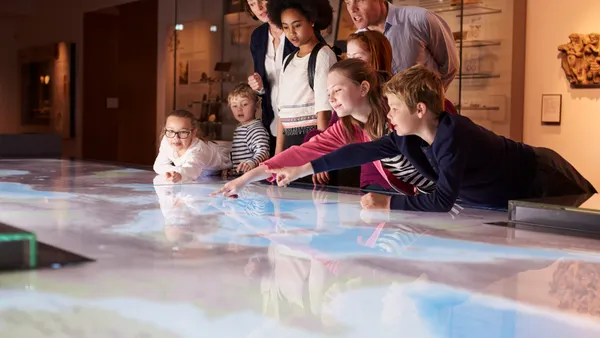Dive Brief:
- Educators continue to spend less time on social studies since No Child Left Behind passed in 2001, a mandate that shifted the focus to emphasize math and reading in schools, according to The Hechinger Report.
- Younger grades in particular are not exposed to a social studies curriculum, which is particularly beneficial in teaching them how to adequately research subjects and properly dive deep into topics when they reach college.
- Some teachers and schools tap into professional development sessions so they can learn how to bring social studies back into their classrooms while also picking up the ability to handle sensitive issues around race, gender and class.
Dive Insight:
With an emphasis on math and English from No Child Left Behind, and an increased focus on science, technology, engineering and math (STEM), social studies has often been left behind. Understanding how to operate within one’s community — the way we interact within social and civic groups — is critical to not just a child’s education, but society at large.
Administrators should know, however, that weaving social studies into classes need not require a complete upheaval of the curriculum. Social studies components can be injected into English language arts and mathematics courses to help spark interest in civic engagement, even during elementary school.
Good resources for administrators include UCLA’s National Standards for History, created in part by historians, which can help students learn how to comprehend, analyze and interpret the past. The Library of Congress can also be mined, along with the history and social studies part of the Common Core State Standards for English Language Arts & Literacy. Exciting students about the way their government works, along with how communities engage with each other, can get them started on playing an active role as they grow and enter society.






 Dive Awards
Dive Awards






